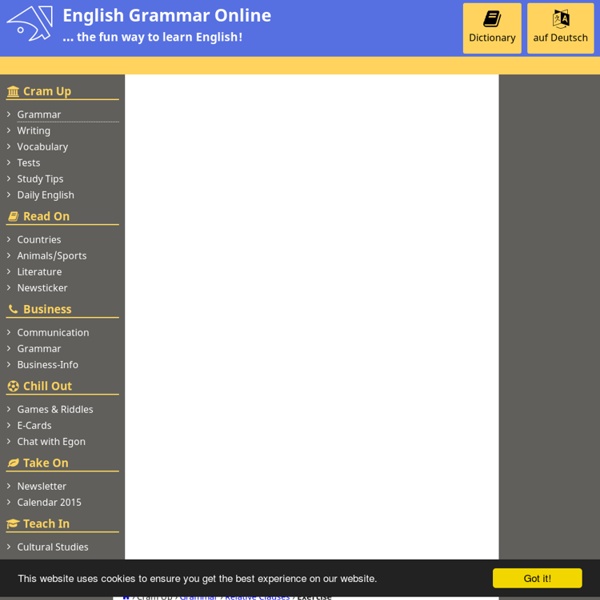



Stonehenge - Tour around Britain :: Default Stonehenge is a mystical place. Its stone circles are probably more than 4,000 years old. The huge stones come from an area about 30 km north of Stonehenge. Nobody knows for sure what the function of Stonehenge was. relative clauses 1. The relative pronouns: The relative pronouns are: We use who and whom for people, and which for things. We use that for people or things. We use relative pronouns to introduce relative clauses, which tell us more about people and things. 2. We use relative clauses to postmodify a noun - to make clear which person or thing we are talking about. as subject (see Clauses Sentences and Phrases) Isn’t that the woman who lives across the road from you? WARNING: The relative pronoun is the subject of the clause. *The woman who [she] lives across the road… *The tiger which [it] killed its keeper … as object of a clause (see Clauses, Sentences and Phrases) Have you seen those people who we met on holiday? - Sometimes we use whom instead of who when the relative pronoun is the object: Have you seen those people whom we met on holiday? - When the relative pronoun is object of its clause we sometimes leave it out: Have you seen those people we met on holiday? as object of a preposition. 3. 4. 5. 6.
ESL Grammar Practice: Adjective Clauses and Relative Pronouns Combine the two sentences. Change the underlined pronoun in the second sentence to a relative pronoun such as "that", "who", or "whose". Make sure your adjective clause immediately follows the noun it modifies, even if you have to break the main clause. After writing the sentences, listen to each correct sentence and repeat it after the speaker. 1. I like people. 2. 3. 4. 5. 6. 7. 8. 9. 10. 11. 12. 13. 14. 15. 16. 17. 18. 19. 20. 21. 22. 23. 24. 25. For more information on relative pronouns and relative clauses, see the Owl Purdue Writing Lab.